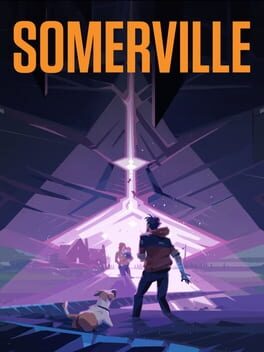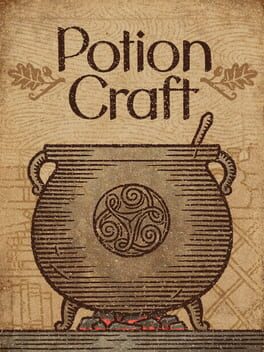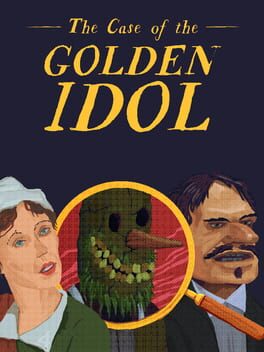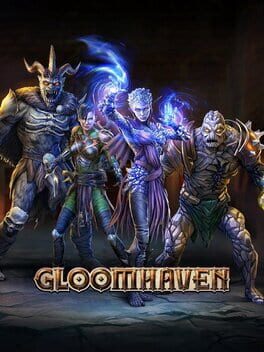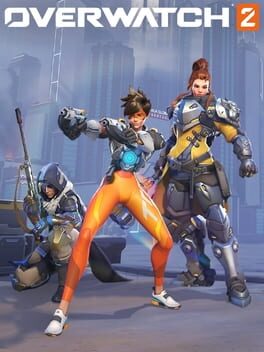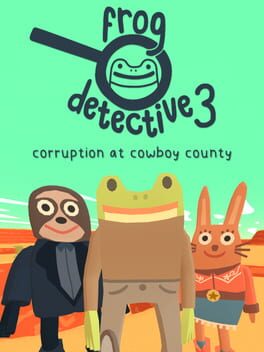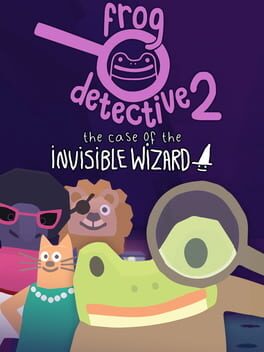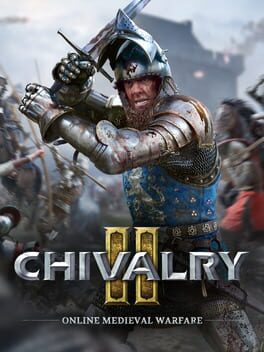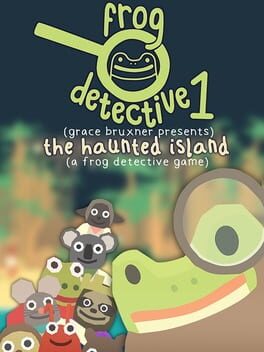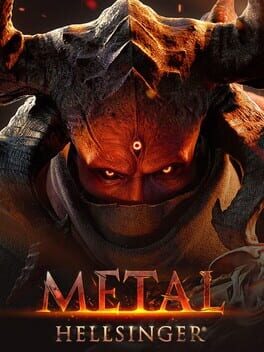Patteca
2022
Gorgeous art and sound design, but otherwise one of the worst games I’ve played in a good while. The most frustrating game design decisions come from ambitious choices to try expanding beyond Limbo and Inside; the most catastrophic decisions are introducing true 3D depth to the environments and opting for a semi-dynamic camera. Abandoning the more common 2.5D and fixed camera of similar games makes the environments difficult to read and navigate, and the way zoomed-out camera is truly a nightmare.
The ferrofluid puzzle mechanics are a neat idea and technically impressive, but implementing them with physics instead of something more scripted leaves them prone to being finicky even when the solution is obvious. Including this many instant death spotlight stealth sections should be a felony, and the same goes for having a main character that so regularly walks this slowly.
I have no idea what the details behind the Playdead lead duo splitting up are, but it’d be ironic if it was just this guy wanting to do all the stuff in Somerville and the other guy correctly thinking “no, that will suck and be no fun.”
The ferrofluid puzzle mechanics are a neat idea and technically impressive, but implementing them with physics instead of something more scripted leaves them prone to being finicky even when the solution is obvious. Including this many instant death spotlight stealth sections should be a felony, and the same goes for having a main character that so regularly walks this slowly.
I have no idea what the details behind the Playdead lead duo splitting up are, but it’d be ironic if it was just this guy wanting to do all the stuff in Somerville and the other guy correctly thinking “no, that will suck and be no fun.”
2022
Pretty torn on this one. I love its visual design, and how inventive and tactile the potion crafting feels. The overwhelming variety of ingredients and the traversal they allow on the alchemy map are wonderful, as are their cleverly color-coded designs. I enjoyed how the clients and the flavor of their demands changes depending on who you refuse service to (serve too many scoundrels and suddenly you’re only getting bandits and necromancers in the door). I don’t love the repetitive grind of the retail simulation, or the way it gates progression behind waiting on certain merchants to show up or certain ingredients to regrow in the garden. I also hated the way the alchemy formulas for the Salts and Stones depended on the same Stone from the previous stage, since I pretty much never wanted to make any of them a second time (it’s novel the first time, but tedious busywork after that).
Based on the dev’s roadmap, it seems like some of these complaints might be alleviated in the future; maybe I’ll pick it up again then, but for now I’m satisfied having created everything but the Philosopher’s Stone and a couple of higher level Salts.
Based on the dev’s roadmap, it seems like some of these complaints might be alleviated in the future; maybe I’ll pick it up again then, but for now I’m satisfied having created everything but the Philosopher’s Stone and a couple of higher level Salts.
An all-time great detective game that fits a compelling otherworldly mystery and memorable character writing into twelve escalating vignettes. The epilogue it builds to is one of the best endings I’ve seen in a while. It’s also the rare deduction game where each case starts out just baffling enough to make the later epiphany feel hugely gratifying, but never inscrutable enough to tempt me into clicking the hint button. The simple, idiosyncratic visuals may look plain or even ugly in screenshots, but I quickly found them beautiful in an outsider art sort of way; the soundtrack is similarly distinctive, filled with eerie propulsive folk music I loved.
I can’t wait to see what this team does next.
I can’t wait to see what this team does next.
2019
(Replay)
Still such a great digital implementation of my favorite boardgame. As great as the original boardgame is, parts of its systems are time-consuming to keep up with manually and felt like they wanted to be a videogame, and turns out they’re great as a videogame that wants to be a boardgame. My party this time was Berserker, Sunkeeper, and Soothsinger. They worked together remarkably well and I had a great time running them through several mid-campaign missions until retirement. I’m putting this down again for a few months to play other stuff, but I already can’t wait to pick back up then with a Nightshroud and Quartermaster.
The real question is when Frosthaven’s adaptation is coming out. :)
Still such a great digital implementation of my favorite boardgame. As great as the original boardgame is, parts of its systems are time-consuming to keep up with manually and felt like they wanted to be a videogame, and turns out they’re great as a videogame that wants to be a boardgame. My party this time was Berserker, Sunkeeper, and Soothsinger. They worked together remarkably well and I had a great time running them through several mid-campaign missions until retirement. I’m putting this down again for a few months to play other stuff, but I already can’t wait to pick back up then with a Nightshroud and Quartermaster.
The real question is when Frosthaven’s adaptation is coming out. :)
2022
I love how this simultaneously feels uniquely of its centuries-old historical era but also contemporarily relatable. Its existential ideas about art and time and how history is remembered are so well expressed. The huge naturalistic cast is initially intimidating to get a grasp on, but like a novel, I had everyone in my head soon enough and could appreciate their rich community life. I think I’d have a great time just existing in this community for a while and talking with everyone about their lives, but the murder mystery requires interesting choices and tradeoffs in how time is spent, and I love how it asks me to make major choices on imperfect information, just like real life. The character customization is completely unique and charming too, and I’m excited to replay it with a totally different background.
2022
I really enjoyed Stray’s moody electronic soundtrack and high-polish sci-fi visuals/environment design. The traversal mechanics are highly prescribed and occasionally annoying, but the trade off is unique movement that looks and feels like a real cat. The fetch quest-y stuff in its mini-hubs are just puzzle-y enough to be interesting, but also intuitive enough that I never felt tempted to look anything up. The more adversarial stealth/fleeing sections aren’t quite as entertaining, but there aren’t a ton of them and they’re still pretty fun. I was surprised at how affective a few of the emotional moments near the end were.
2022
This feels about as good as this sort of richly-polished blockbuster game gets. The performances are charming and engaging, and the story is constantly finding new interesting character pairings. The cast thoughtfully runs the gamut of Norse mythology and offers new, sympathetic portrayals for many of the more familiar names. The environments are stunningly lavished with detail. The combat is even deeper and more tactical than before, with a nearly overwhelming variety of options for managing enemies.
And yet, I was also semi-regularly frustrated. The relentless, immediate spoilers from companions for the glut of mostly obvious environmental puzzles are bizarre, but even worse is the total lack of guidance if you’re struggling with the most challenging puzzles in the game, which all show up in the combat. There are way more enemy types this time around, and many of the combat scenarios throw them at you in configurations that (if you’re playing on a hard enough difficulty) require specific tactics in addition to quick thinking and button presses. But the game will let your health empty over and over without ever pointing towards anything particularly misguided about your tactics; I had to figure out what I was doing wrong to progress each time. It’s doubly annoying that so much of the combat difficulty comes from fighting the camera; there’s so many ranged, status-dealing, wildly agile enemies that show up in aggressive mobs with spongy health bars. I could have turned the difficulty down a bit (and eventually did once I was bored near the end of the post-game stuff), but I wanted to understand the combat design better, not just skew the numbers in my favor enough to ignore it.
This is also a game that has very few new ideas for gameplay mechanics. It rigidly rejects any attempt at interacting with the environment in a way that wasn’t already thought of by the devs and polished for 1000s of hours. I enjoyed exhausting the optional content outside the main storyline, but I probably don’t need to play another game for a long while that rewards my curiosity exclusively with chests of incremental crafting materials that are then used to tick up an array of numbers I can rarely feel the difference in. Similarly, I’m not sure how many more HD cliff faces I need to amble across with grip spots or slowly shuffle across on a narrow ledge.
And yet, I was also semi-regularly frustrated. The relentless, immediate spoilers from companions for the glut of mostly obvious environmental puzzles are bizarre, but even worse is the total lack of guidance if you’re struggling with the most challenging puzzles in the game, which all show up in the combat. There are way more enemy types this time around, and many of the combat scenarios throw them at you in configurations that (if you’re playing on a hard enough difficulty) require specific tactics in addition to quick thinking and button presses. But the game will let your health empty over and over without ever pointing towards anything particularly misguided about your tactics; I had to figure out what I was doing wrong to progress each time. It’s doubly annoying that so much of the combat difficulty comes from fighting the camera; there’s so many ranged, status-dealing, wildly agile enemies that show up in aggressive mobs with spongy health bars. I could have turned the difficulty down a bit (and eventually did once I was bored near the end of the post-game stuff), but I wanted to understand the combat design better, not just skew the numbers in my favor enough to ignore it.
This is also a game that has very few new ideas for gameplay mechanics. It rigidly rejects any attempt at interacting with the environment in a way that wasn’t already thought of by the devs and polished for 1000s of hours. I enjoyed exhausting the optional content outside the main storyline, but I probably don’t need to play another game for a long while that rewards my curiosity exclusively with chests of incremental crafting materials that are then used to tick up an array of numbers I can rarely feel the difference in. Similarly, I’m not sure how many more HD cliff faces I need to amble across with grip spots or slowly shuffle across on a narrow ledge.
2022
I love its compellingly layered narrative and interactive mechanics. The surface layer of trawling through lost footage of a cult film figure is intriguing and entertaining, piecing together in my head the dual narratives of what’s happening in the film and behind the scenes. That game would be novel and solid enough, but then Lynchian details creeped into view that elevated and complicated my understanding. This layer is satisfying, but might also be too ambiguous if it stopped there. Thankfully, it eventually reveals even more, offering wild but clear explanations for scenes that might otherwise be mystifying or imply totally different events happening.
As much as I love this game, it does seem easy to bounce off it without appreciating what it’s doing, or else like it but stop playing and not realize there’s more to uncover. The ending sequence (which achievements say only ~10% of players see) played when I’d only uncovered a fraction of its deeper layers, and it didn’t make a ton of sense. It motivated me to keep going though, and retroactively became an amazing moment once I fully understood it. Going by achievements though, it seems like very few (maybe less than 1% of) players peel back enough layers to get there, and I can imagine thinking it fails its ambitions if I hadn’t exhausted its secrets.
If you’re interested in filmmaking and delving deep into mysteries with little explicit guidance, I can’t recommend this enough. Its performances and aesthetics are great, and its revelations are a treat.
As much as I love this game, it does seem easy to bounce off it without appreciating what it’s doing, or else like it but stop playing and not realize there’s more to uncover. The ending sequence (which achievements say only ~10% of players see) played when I’d only uncovered a fraction of its deeper layers, and it didn’t make a ton of sense. It motivated me to keep going though, and retroactively became an amazing moment once I fully understood it. Going by achievements though, it seems like very few (maybe less than 1% of) players peel back enough layers to get there, and I can imagine thinking it fails its ambitions if I hadn’t exhausted its secrets.
If you’re interested in filmmaking and delving deep into mysteries with little explicit guidance, I can’t recommend this enough. Its performances and aesthetics are great, and its revelations are a treat.
2023
This review was written before the game released
Not a bad game, but I haven’t really liked a MOBA-influenced hero shooter and this is ultimately just another of those. It does seem slick and polished, though. The progression system seems a bit scummier than usual, but I don’t plan to stick with it long enough to find out.
Still really like the music and writing and general vibe, but this never stops feeling kinda tedious to play and ultimately seems like it’d be better as an animated show or something. The original game is still probably my favorite for its novelty and brevity, but this final case surprised me by being the most narratively rich and drawing from the charming universe crafted by the previous cases. It also adds in a scooter that feels good and makes its larger fetch quest space more tolerable to get around. The notebook remains dreadfully slow as it unskippably populates new information.
Still notably charming and pleasantly funny, but the slight gameplay sees diminishing results repeating the original game’s item-trading fetch-quests. The notebook is a neat idea, but the time it adds every time new info is filled out feels worse than the original’s simple item icons instantly added to the UI. Still looking forward to the third entry in this series, but I’m hoping it mixes the formula up in an interesting way.
2021
Probably my favorite multiplayer combat game since Battlefield Bad Company 2. The multistage objectives are consistently fun even when I’m on a bad team and getting rolled, and its medieval combat is surprisingly deep. Plus, it offers several options to help the team beyond deathmatch sword prowess. A playful sense of humor subtly pervades everything, without being the needy sort of wacky in-your-face humor that a lot of “funny” games have.
I’ll be playing this for a while, and it’ll possibly tick up to a higher rating if it hangs around long enough.
I’ll be playing this for a while, and it’ll possibly tick up to a higher rating if it hangs around long enough.
2022
The hauntingly evocative visuals and sounds are incredible, and the mostly diegetic UI and adventure puzzling are unique and satisfying to figure out. The early and late chapters were my favorite, but the middle is still solid. The contentious bit is the combat; I understand it’s meant to be avoided and is ultimately limited to very few encounters, but a couple of those sections have the potential to be such miserably tedious speed bumps that I’m not sure the tension they otherwise add is worth it. Everything aside from the combat kept me motivated to push through the couple of frustrating scenes I ran into, though.
2022
Feels great when it’s clicking but really bad when a big demon is kicking my ass and I can’t figure out what I’m doing wrong. Adding rhythm game constraints to Doom is a neat idea, but Doom is already hectic/challenging/stressful enough and adding a note chart tips over into frustrating more often than not. Also, the story is too wordy and serious to just be a silly goof, but nowhere near interesting enough to be worth paying attention to.
